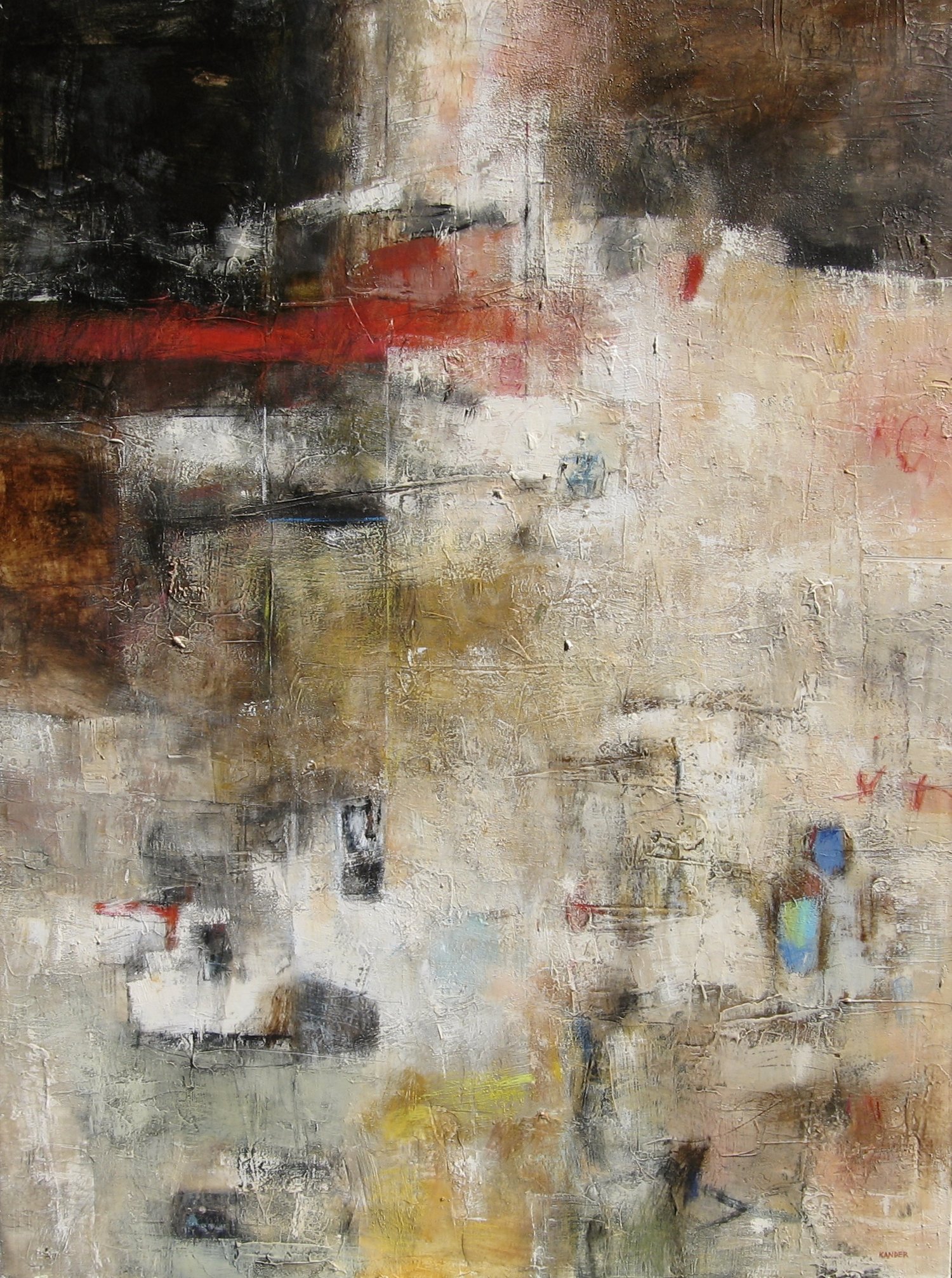A Conversation With October Special Exhibitor Tamar Kander
What are your earliest memories of art? How did you become an artist yourself?
I always drew. From the time I could hold a crayon, I used whatever surface was available. Frequently the walls, which did not please my parents.
I studied Fine Art at university and went on to get a Masters, I simply never thought of doing anything else.
What has been your evolution as an artist?
After drawing and painting on my own, at about 15 I started classes with a teacher who encouraged learning to draw, something I think is very important as a foundation for everything, even though I have become an abstract painter. I think good draftsmanship is the basis for everything. Non-representational art is not just a collection of colors and shapes, it is an organized and coherent expression.
I graduated to watercolors and then to oils and acrylics. When I was about 18, I became very interested in creating texture on the surface of my canvas and experimented using collage and various structural mediums.
By the time I was finished with school I felt confident enough to search for gallery representation. I have been very fortunate to be shown in galleries and to be able to make my living this way.
Are there any artists who have inspired and influenced you in your work? If so, who are they?
I was hugely influenced by my teacher at university, he was an Italian called Giuseppe Cattaneo, who had a very spiritual aspect to him. He encouraged discipline and taught me to trust my intuition.
The Spanish painter Antoni Tapies was an idol of mine, his textural compositions and subtle colors taught me a lot. Still do.
Jim Dine is amazing for his wonderful drawings, J.M.W.Turner for the fabulous watercolors and misty paintings….Robert Motherwell for striking expression, so spontaneous and alive.
Can you describe your process for creating a work of art?
I begin with a formal idea of color and structure. Loose but predetermined. I then layer collage as well as different mediums to form the groundwork for the next stage. I use pigments as well as textural elements and build up the surface to make it rich and evocative. As I draw and paint into this preliminary layer sometimes elements placed on the canvas become obscured, while some survive. I progress as if I am having a conversation with the painting. I add color and line and wait until the painting tells me how to proceed; it’s back and forth until I feel it is complete. It is a constantly shifting process.
Your work seems to have a very distinctive, abstract style to it. Can you talk about meaning or goals behind your work?
It is not strictly abstract to me, it’s the way I see. I teeter between landscape- inspired expression and more formalized non-representational works whose shapes and tints I find somewhere inside me. We all have a storehouse, and for each of us they contain different elements from which we draw.
Where do you see your work going from here?
It is a constant evolution. Each painting leads to the next one, often a series in the same vein.
I see myself always learning, continuing to challenge myself and striving to improve.




